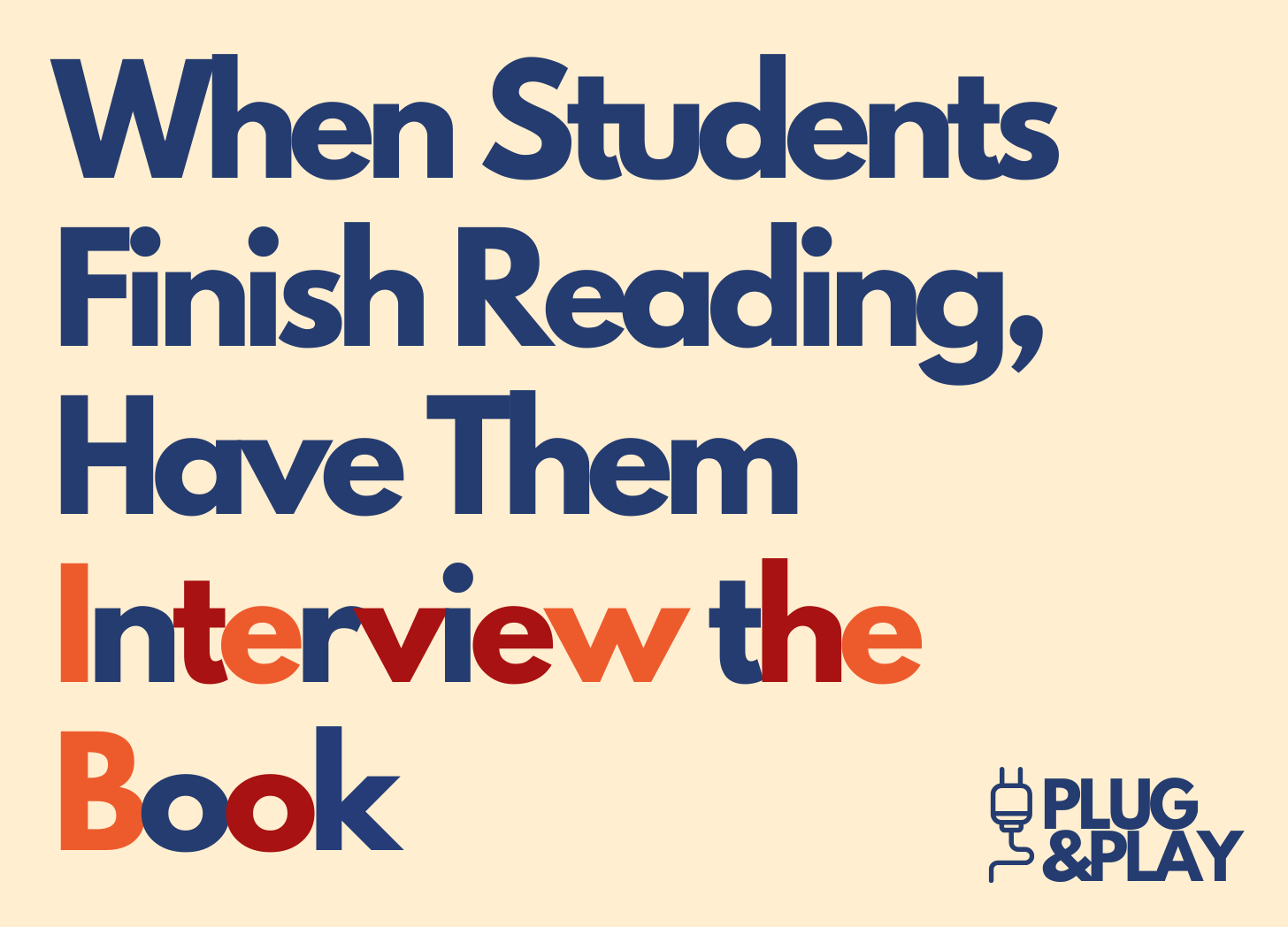When Students Finish Reading, Have Them Interview the Book
A full-class activity to help students dig into a book they've read.
Welcome to the Plug & Play section of Desk Notes! Every week you’ll receive an ELA/creative writing activity that I’ve had success with in my classroom.
To learn about my pedagogical design, check out Field Reports.
TLDR: Students interview each other and speak on behalf of their book.
This activity can be used in a variety of reading units: book clubs, student-choice reading, class novels, independent reading, etc. I do this at the end of a unit where students have been reading books of their choice.
The Plan
Overview:
Set up the room.
Introduce the activity.
Run the activity.
Video overview.
Ideas for extending the activity.
Set up the Room
For this activity, set up your room in a “speed dating” setting. The idea is that two students have a conversation for a set amount of time before moving to the person next to them. The speed dating structure allows them to navigate the room effectively.
Review and print this document.
Introduction
Get students into the “speed dating” desk arrangement, then introduce the activity.
Possible Scripting—
“If you want to get to know someone, you can spend time with them. If you want to know specifics about them and really dig deep, you interview them and ask them questions. The same can be said of books. You have already spent some time with your books. You know them pretty well. Today is intended to help you dig deep.
“For today’s activity, you will be interviewed by classmates, and you are going to adopt a certain persona. It may feel abstract at first, but you’ll get a feel for it. Your job is to speak as if you are the book. You must represent its characters, plot, and themes to the best of your knowledge. So if someone were to ask your name, your answer would be the title of the book. If someone asks what you care about, you’d think about the society in your book and distill what matters to the people in it. Speak for the book; represent it well. When you answer questions, be sure to respond with specific examples from the book.”
Have students fill out Part 1 of the document before beginning the interview portion. Part 1 helps bring the book back to the top of mind so students are primed for answering deeper questions about the book.
(You may also find it helpful to have students read through the interview questions before the interviews actually begin. This could help students who may struggle to come up with answers on the spot. An alternative to this, and what I did the first time I ran this activity, is require each person to silently think for 1 minute before answering each question their interviewers ask them.)
Run the Activity
Determine the amount of time needed for your students to dig into conversations. Maybe it’s 5 minutes, or maybe it’s 10. During each interview rotation, one student adopts the role of the interviewer while the other student speaks on the behalf of the book.
Possible Scripting—
“Alrighty, you’re now sitting across from your first partner. Everybody in these seats here (point to a section) will start as the interviewer; the other students are adopting the persona of the book. Together, select one question on the paper that you will discuss.
“A good interviewer helps their guest move beyond surface level thoughts. A good interviewer asks follow up questions to help their partner dig further into their ideas than they’d do on their own. Help your partner think deeply about the book. If they don’t answer your questions with specific parts of the book, point it out so they can try again.
“After this timer is up, you will stay in the same seats and switch roles. Once that is over, everyone in these seats (select one side) will rotate to the left so they have a new partner.
“Interviewer, one more thing: in addition to asking questions, you must also take notes. Your partner will hand you their packet for you write down what they say on their paper.
“In between the rotations, I’ll allow everyone to review the notes that their partner took on their paper. You can add anything to it that you thought of/said but that your interviewer didn’t catch.”
(You can either require students to answer the same questions at once, or you can let the interviewer pick one that is blank on their partner’s paper.)
Video Overview
Ideas for Extending the Activity
When I did this activity, it was to help students prepare to write a paper where they contrasted the values/worldview of the book with their own.
Any activity that depends on deep knowledge of a book: book talks, book reports, class conversations, papers, visual representations, analysis, etc.
Give students time to read over the notes that their partners took to look for common ideas in what they said.
Thank you for reading! I’d love to hear from you if you use this activity or any adaptations of it in your class! If you find something that makes it better, let us know in the comments.
Cheers,
Brandon Merrill






